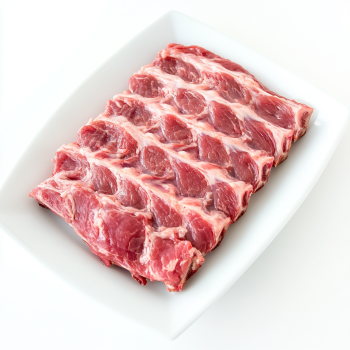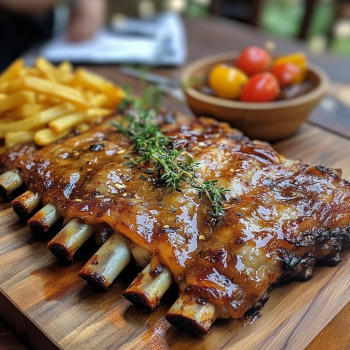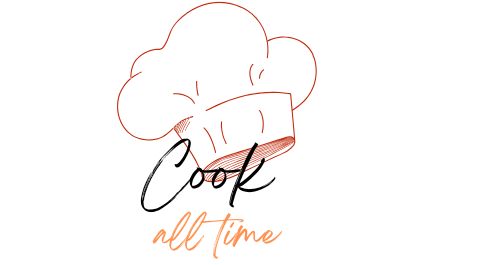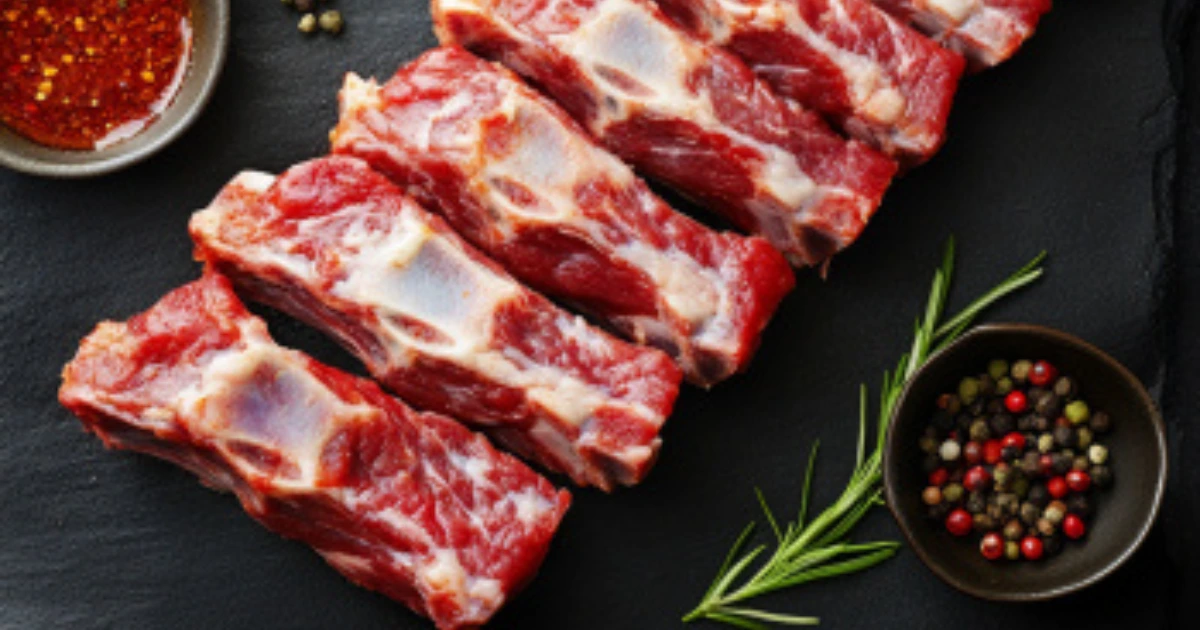Introduction
Best Cooking Methods for Beef Back Ribs .Back ribs are a beloved cut of meat, known for their rich flavor, tenderness, and versatility in cooking. They come from the upper rib section of the cow and offer a perfect balance of meat and bone. Whether grilled, smoked, or cooked in the oven, back ribs are enjoyed by many for their smoky, savory taste and satisfying texture. However, one question often arises: Which of the cooking methods is best for back ribs?
Understanding the right technique for cooking back ribs can elevate the flavor and ensure the meat turns out tender and juicy. In this article, we will explore various cooking methods, the factors that influence the best technique, and help you choose the ideal one for your next meal.
Table of Contents
Factors to Consider When Choosing a Cooking Method: Understanding Meat Texture and Flavor
When deciding on the best cooking method for back ribs, it’s essential to consider several factors. These include the thickness and marbling of the meat, cooking time, and personal preferences for flavor and tenderness.
Thickness and Marbling of Meat: How It Affects Cooking
The thickness and marbling of the meat play a significant role in how back ribs cook. Meat with more marbling tends to be more tender and flavorful, and it responds better to low and slow cooking methods. In contrast, leaner ribs may require more attention to avoid drying out. Grilling, for instance, may work better for ribs with moderate fat content, while smoking excels with fattier cuts due to the long cooking process.
Cooking Time vs. Convenience: Balancing Effort and Results
Different cooking methods require varying amounts of time and effort. If you’re looking for a method that offers convenience without sacrificing flavor, oven-baking or slow cooking may be your best option. On the other hand, if you’re prepared to spend more time and effort on your ribs for a deeper flavor profile, smoking or grilling could be worth the investment. Ultimately, the choice between speed and flavor is up to you.
The Top Cooking Methods for Back Ribs: Exploring Popular Techniques
Now that we’ve considered the key factors, let’s dive into the most popular cooking methods for back ribs. Each method has its benefits and can produce a variety of flavors and textures. The following techniques offer different results based on your preferences for flavor, tenderness, and cooking time.
Grilling: Smoky Flavor with a Charred Finish
Grilling back ribs provides a delicious, smoky flavor with a crispy, charred exterior. To achieve the perfect grilled ribs, it’s essential to control the heat and avoid direct contact with flames. The high heat sears the meat, sealing in the juices while creating a crispy texture. Many people enjoy the distinctive smoky flavor that grilling imparts. However, which of the cooking methods is best for back ribs? If you prefer a smoky, charred finish, grilling is a great option.
Smoking: Low and Slow for Maximum Tenderness
Smoking is an ideal choice if you’re aiming for maximum tenderness. at low temperatures over a long period of time allows the flavors to develop and the meat to become incredibly tender. This method excels at infusing deep, smoky flavors into the meat, making it a favorite for BBQ enthusiasts. While it takes time, the result is well worth the wait, especially if you’re looking for fall-off-the-bone tenderness. Smoking is particularly well-suited for tougher cuts that benefit from a longer cooking time.
Oven-Baking: Convenience and Consistency
Oven-baking is a straightforward, reliable method for cooking back ribs. This method requires minimal effort, and you can achieve consistent results every time. Simply season the ribs, wrap them in foil, and bake them at a low temperature. While the flavor may not be as intense as grilling or smoking, oven-baked ribs are tender and juicy. For those seeking convenience, oven-baking provides a great balance between effort and results.
Slow Cooking: Minimal Effort with Rich, Juicy Results
Slow cooking is a hands-off method that results in juicy, tender ribs. Using a slow cooker or crockpot, you can set the ribs with seasonings, sauces, and a bit of liquid, allowing them to cook over several hours. This method allows the ribs to cook in their own juices, ensuring a tender, flavorful result. Slow cooking works well if you’re looking for convenience and minimal preparation but still want excellent flavor.
Sous Vide: Precision Cooking for Restaurant-Quality Ribs
Sous vide is a modern cooking technique where the meat is vacuum-sealed and cooked in a water bath at a precise temperature. This method guarantees restaurant-quality back ribs with incredible consistency. Sous vide cooking allows the meat to retain all its natural juices, making it tender and perfectly cooked throughout. For those looking for precision and control, sous vide offers an innovative way to cook ribs, though it may not provide the smoky char of grilling or smoking.
Comparing c: Pros and Cons of Each Technique
Each cooking method has its advantages and drawbacks. It’s important to understand how each method impacts the flavor, texture, and cooking time for your back ribs.
Grilling vs. Smoking: When to Choose Each Method
Grilling provides a quick and smoky flavor with a crisp exterior, making it ideal for those who want a short cooking time. On the other hand, smoking takes longer but results in a deeply flavored, tender rib. Grilling is best for quicker meals, while smoking is perfect for those who prioritize flavor over speed.
Slow Cooking
Oven-baking provides a consistent result with less active involvement, while slow cooking requires minimal effort but results in tender, juicy ribs. If you’re short on time, oven-baking is a quicker choice, but if you want the meat to fall off the bone, slow cooking is the way to go.
Sous Vide
Sous vide cooking offers precision and consistency, making it ideal for those who want perfect ribs every time. However, traditional methods like grilling and smoking offer flavors and textures that sous vide can’t replicate. If you value precision, sous vide is the answer, but for those seeking classic BBQ flavor, grilling or smoking is the better option.
Step-by-Step Guide for Each Cooking Method: Perfecting Back Ribs with Any Technique
Cooking back ribs to perfection requires a combination of the right techniques and attention to detail. Whether you prefer grilling, smoking, or using the oven, each method offers distinct advantages. But, which of the cooking methods is best for back ribs? This guide will walk you through the steps for each technique, ensuring you can achieve mouthwatering results every time.
Preparing the Ribs: Trimming, Seasoning, and Marinating

Before cooking back ribs, preparation is essential to ensure flavor and texture. Start by trimming excess fat. This allows the ribs to cook evenly and prevents them from becoming too greasy. Next, season the ribs with a dry rub or marinate them to infuse flavor. Whether you prefer a bold, spicy rub or a tangy marinade, both methods elevate the taste. Allow the ribs to rest for 30 minutes after seasoning to ensure the flavors absorb properly.
Grilling Instructions: Achieving the Ideal Char and Flavor
Grilling back ribs is a quick and flavorful method. First, preheat your grill to a medium-high heat. Place the ribs bone-side down on the grill and cook for 3-4 hours over indirect heat, allowing the meat to develop a smoky, charred flavor. Which of the cooking methods is best for back ribs? Grilling is ideal if you want a crisp, smoky crust. Flip the ribs occasionally and baste with your favorite BBQ sauce during the final minutes of grilling to achieve the perfect glaze.
Smoking Instructions: Creating a Perfect Smoky Profile
Smoking is the best choice for those who appreciate rich, smoky flavors and tender meat. Begin by preheating your smoker to 225°F, ensuring the ribs are placed bone-side down on the rack. The low and slow cooking process breaks down the connective tissue, making the meat fall-off-the-bone tender. Smoking back ribs for 4-6 hours allows them to absorb the smoky flavor deeply. Remember to monitor the temperature closely to avoid overcooking and check for tenderness using a meat thermometer.
Grilling vs. Smoking
For those seeking convenience without sacrificing flavor, oven-baking is an excellent choice. Preheat your oven to 275°F and place the ribs on a baking sheet lined with aluminum foil. Cover the ribs with foil and bake for 2.5 to 3 hours. This method locks in moisture, ensuring tender ribs with minimal effort. While oven-baked ribs may lack the smoky aroma of grilled or smoked ribs, they still achieve a soft, juicy texture. For extra flavor, consider glazing with BBQ sauce in the last 30 minutes of baking.
Oven-Baking vs. Slow Cooking

Slow cooking is ideal for a hands-off approach. Simply season your ribs, add some liquid (such as broth or BBQ sauce), and place them in a slow cooker. Set the cooker on low for 6-8 hours and let the ribs cook until tender. This method offers juicy, flavorful ribs with minimal active preparation. The slow cooker locks in moisture, creating a melt-in-your-mouth texture without the need for constant attention. Slow cooking is perfect for those who prefer a simple, reliable technique.
Sous Vide Back Ribs vs. Traditional Methods
Sous vide is a precise method that guarantees perfectly cooked ribs every time. To begin, season your ribs and vacuum seal them. Then, place the sealed bag in a water bath heated to 165°F. Cook for 8-12 hours, depending on the desired level of tenderness. After sous vide cooking, finish the ribs on a grill or in the oven for a few minutes to develop a crisp, flavorful crust. Sous vide cooking offers consistency and ensures your ribs retain their juiciness throughout the process.
Common Mistakes to Avoid with Back Ribs Cooking
While cooking back ribs is relatively straightforward, several common mistakes can affect the final result. To achieve tender, flavorful ribs every time, avoid these pitfalls.
Overcooking
One of the most common mistakes when cooking back ribs is overcooking. Overcooked ribs can become dry and lose their natural juiciness. Always monitor the temperature using a meat thermometer, and cook the ribs to an internal temperature of 190°F to 203°F for the perfect tenderness. Remember that ribs continue to cook slightly after being removed from the heat, so allow them to rest before serving.
Underseasoning Cooking Methods
Back ribs are flavorful on their own, but seasoning plays a crucial role in enhancing the meat’s natural taste. Avoid underseasoning your ribs, as this can result in bland meat. Experiment with different spice blends, marinades, or rubs to develop a bold, delicious flavor profile. Don’t forget to apply seasonings generously and allow the ribs to marinate or sit with the rub for at least 30 minutes.
Pairing Back Ribs with Sides: Enhancing the Meal
Back ribs are a star dish, and the right side dishes can complement their rich flavor. Which of the cooking methods is best for back ribs? Regardless of the method, pairing them with the right sides enhances the meal and creates a balanced plate.
Classic Barbecue Sides: Coleslaw, Cornbread, and Baked Beans
Classic barbecue sides such as coleslaw, cornbread, and baked beans perfectly balance the richness of back ribs. Coleslaw adds a refreshing crunch, while cornbread provides a warm, comforting side. Baked beans offer a slightly sweet, smoky flavor that complements the savory taste of the ribs. Together, these sides elevate the overall dining experience.
Creative Side Dishes: Grilled Vegetables and Light Salads
For a healthier or lighter option, consider pairing back ribs with grilled vegetables or fresh salads. Grilled vegetables, like asparagus, bell peppers, and zucchini, provide a smoky flavor that matches well with the ribs. A light salad with greens, tomatoes, and a tangy vinaigrette can balance the richness of the meat. These creative alternatives are perfect for those looking to diversify their meal.
FAQs
Here are answers to some of the most frequently asked questions about cooking back ribs.
How Do I Keep My Ribs Moist?
To keep your ribs moist, cook them at low temperatures for a longer period. Using methods like smoking, slow cooking, or sous vide helps retain moisture. Also, avoid overcooking, as this will dry out the meat.
Can I Use Pre-Made Sauces?
Yes, pre-made sauces can be convenient and flavorful. However, for a more personalized touch, consider making your own BBQ sauce. Pre-made sauces often contain extra sugar or preservatives, but they still work well for glazing the ribs toward the end of cooking.
Conclusion
Ultimately, the best cooking method for back ribs depends on your preferences for flavor, tenderness, and convenience. Grilling and smoking provide smoky, charred flavors, while oven-baking and slow cooking offer simplicity and consistent results. Sous vide cooking ensures perfect precision and tenderness. Experiment with different techniques to find the one that delivers your ideal ribs every time.
For more cooking tips and insights, visit how to make Queen Elizabeth pancakes or explore ground beef recalls for food safety tips.
By considering factors like time, flavor, and texture, you can confidently decide on the best method for your back ribs recipe.


1 thought on “Best Cooking Methods for Beef Back Ribs”